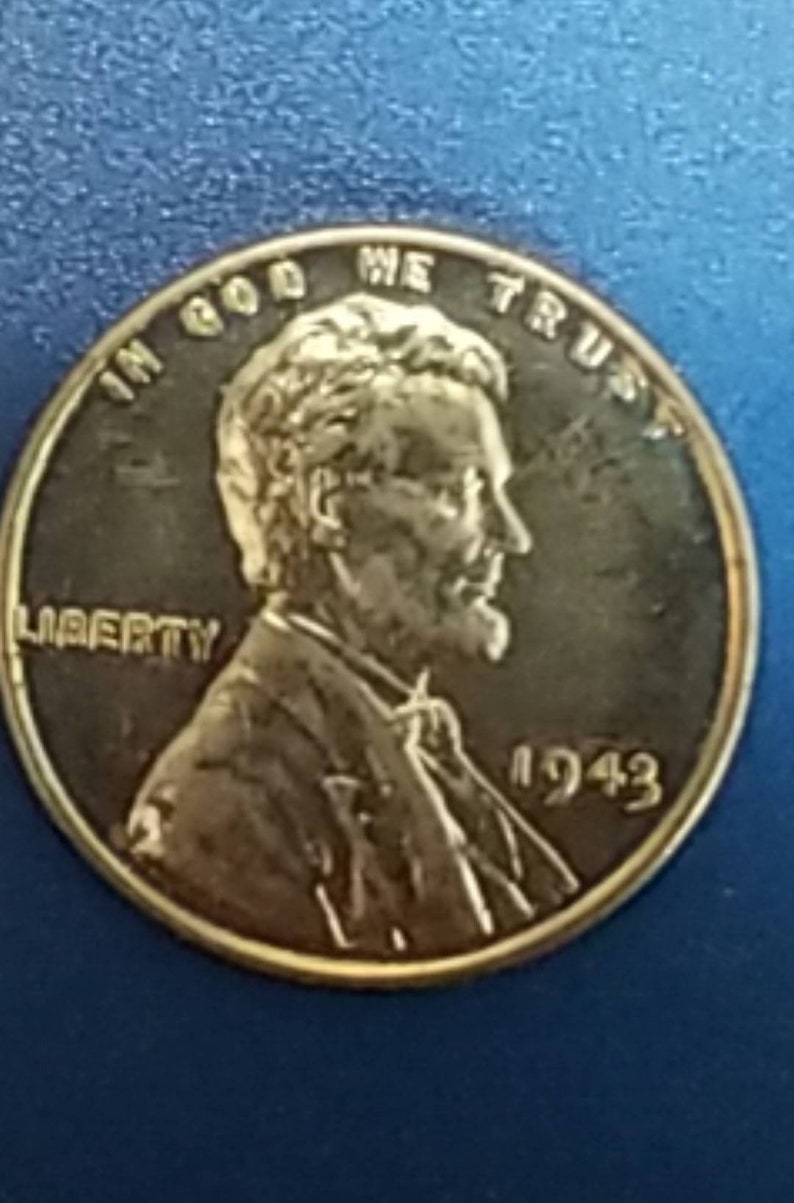
Good – The coin with this rating was in circulation for a long time and has shown severe damage signs. You can see scratches and damage to the relief, but details are still noticeable and recognizable. There are no rust signs on this penny, but you can often notice places where zinc coating is incompact.įine – This penny was in circulation for a while but without much damage. You can see them on Lincoln’s portrait relief, particularly on high spots like hair curls. 1943 Steel Lincoln penny value*Įxtra fine – This coin wasn’t in circulation for a long, and you can notice only light signs of wear on its surface. So, their absence proves that the coin is intact. As you have probably known, this metal oxidizes in contact with moisture, creating stains on the surface. You should always check the zinc oxidation levels. Uncirculated – This coin wasn’t in circulation and kept the entirely noticeable highest relief points and the glow on Lincoln’s cheek and jaw. As you can guess, this mistake increases the coin value. You will have no difficulties recognizing them because there is a noticeable gap between these two marks. A bold D is embossed on the reverse, and the other D is less visible and positioned closer to the coin’s left edge. You can quickly notice the double-printed mintmark on the coin surface. The 1943 D/D steel penny is an error coin minted that particular year. As you can expect, they are precious and expensive. It is known that only about 40 copper pennies were minted in 1943, so they are considered exceptionally rare on the current coin market. 1943 Copper Lincoln penny value*Īs a result, the first produced coins contained both metals and got reddish-yellow color. Although the US Mint decided to replace copper with steel in the penny production, the machines mixed copper leftovers with steel plates. The 1943 copper penny was an accidental manufacturing error. *by CoinStudy Specific 1943 Pennies 1943 Copper Lincoln penny Most are entirely inexpensive, but you can find the high-graded piece for $3,250 in the coin market. Even though they are pretty common these days, most collectors want to include them in their collections. In 1943, 217,660,000 pennies came out from the Denver mint. If you have one in an MS 68 rating, you can sell it for $3,500. In 1943, this mint produced 191,500,000 pennies, and it was the lowest production that particular year. The S-marked penny comes from the San Francisco mint. Therefore, you can sell the 1943 MS 68 Steel Lincoln penny for an impressive $4,690. Since most of these coins were in circulation, today is difficult to find a specimen in excellent condition. As a result, the 1943 penny is very low on the rare coin scale. It is the 5th highest number of all the pennies made in this mint. The Philadelphia mint produced 684,628,670 pennies in 1943. You can quickly distinguish them by the marks on the coin reverse. These three mints struck over 1,000,000,000 Lincoln steel pennies in 1943. The Denver mint produced the 1943 penny with a D mint mark.The San Francisco mint produced the 1943 penny with an S mint mark.

The Philadelphia mint produced the 1943 penny that typically has no mint mark.In 1943, three mints produced this penny: As always, there are also two inscriptions, the UNITED STATES OF AMERICA and E PLURIBUS UNUM. You can see two stalks of wheat along the reverse’ rims, with the face value of the ONE CENT in the middle. A former US President Abraham Lincoln profile is on the obverse, with the inscription IN GOD WE TRUST located on the upper edge.Ībove Lincoln’s shoulder is the word LIBERTY, while in front of the profile are the year of minting and the mint mark. The 1943 Lincoln penny has the same look as other pennies in the series. For all these reasons, the US Mint decided to reuse copper for producing pennies in 1944. People often mistakenly replaced these two coins for similarity and lost nine cents per piece when paying something. Another disadvantage was the similarity with Dimes. After a while, the coins quickly lost a zinc surface layer and were prone to rust. Unfortunately, this change in the material wasn’t an excellent idea.

That change made this penny look like a silver coin, setting it apart from all the pennies ever minted before. Therefore, it replaced copper in pennies with zinc-coated steel. Since the US Mint was making pennies of this metal, it decided to contribute. The military industry was run out of copper necessary for making castings.


 0 kommentar(er)
0 kommentar(er)
